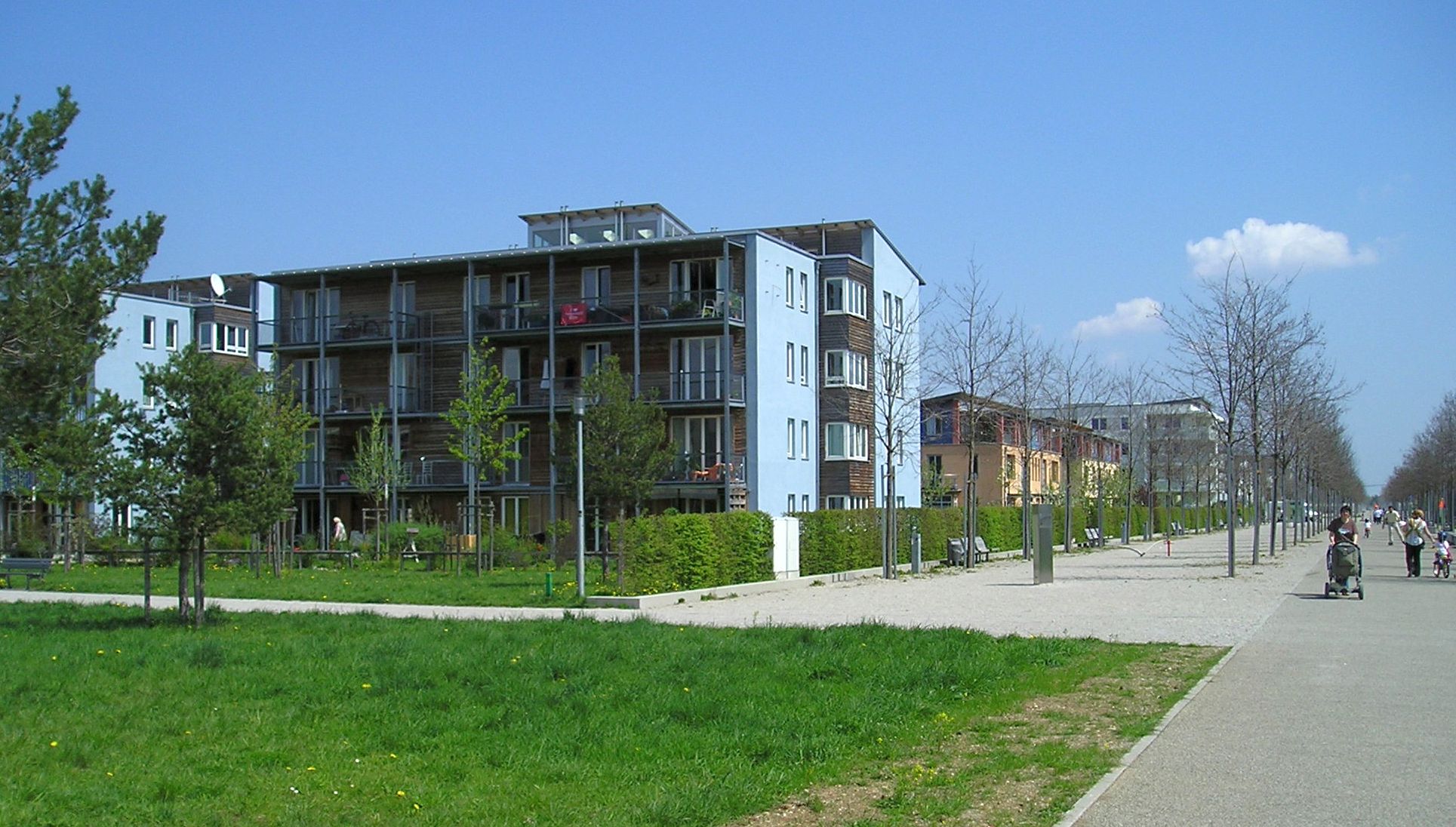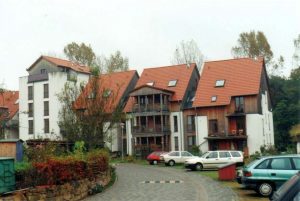70372 Stuttgart: Europas größte Abwasserwärme-Nutzungsanlage wird künftig das neue Wohn‐ und Gewerbegebiet mit 850 Wohneinheiten, Gewerbeflächen, Parks, Plätzen und Straßen auf insgesamt 22 Hektar versorgen und ist damit ein Leuchtturmprojekt für Erneuerbare Energien. Der Abwasserkanal wird über einen 300 m langen Wärmetauscher Nahwärme und -kälte liefern. Die Anlage ist seit 2018 installiert und wird in Betrieb genommen, sobald auch die Heizzentrale im Vollbetrieb ist. Das Quartier ist noch in Bau. Fertigstellung des Quartiers: 2021
Lighthouse Project "Wastewater Heat Utilization NeckarPark

Wastewater is used as the main heat source for the new construction quarter. The heat extraction in the design case is 2.1 megawatts. The heat exchanger modules are attached to the bottom of the new sewer. The length of the heat exchanger section is about 300 m, making the plant the largest of its kind in Europe. To keep the heat exchangers free of deposits, a flushing shield is integrated into the channel upstream of the heat exchanger section. The heat exchanger module has been in operation since 2018.
The heat for hot water preparation is to be generated in a heating centre by means of a combined heat and power plant. The heating network was designed as a 4-pipe network: Flow/return for low-temperature space heating and flow/return for hot water for domestic hot water preparation. Such an optimised overall system "heat supply/building" with integration of regenerative energies can also be used for area-wide expansion of district or local heating in areas with low heat density.
With currently 17 plants already in operation, Baden-Württemberg currently has the most wastewater heat utilisation plants of this type in Germany. Wastewater heat utilisation is recognised as a use of renewable energy in accordance with the Baden-Württemberg Renewable Heat Act. Potential studies to determine suitable locations as well as feasibility studies that demonstrate the technical feasibility as well as the economic viability of a project are subsidised by the state government of Baden-Württemberg to the tune of 50 percent.
Planning of the wastewater heat recovery system: Ingenieurbüro Klinger und Partner GmbH, Stuttgart
Mixed-use, urban quarter
A quarter of "short distances" with living, working and a wide range of services was implemented. An urban density was implemented so that the coexistence of different uses is successful. Shops, services and gastronomy on the ground floors along the important urban spaces ensure that the district is supplied with goods and services close to home and enliven the public spaces. Short distances to the day-care centres, the adult education centre (vhs), the all-day primary school and the sports facilities facilitate everyday life and enable encounters in the district. The offerings of the district house and the culture island support a lively, diverse neighborhood life and promote good neighborhoods. The future sports pool on Mercedesstrasse is also important for the city as a whole.
Urban design: "Pesch Partner pp a | s architekten stadtplaner, Stuttgart".
Promotion: The BMWi funded the project from 2013 to 2020 with 3,788,500 €.
Links
www.stuttgart.de/...neckarpark.php
https://umwelttechnik-bw.de/…stuttgart-errichtet-groesste-abwasserwaermenutzungsanlage-europas
https://projektinfos.energiewendebauen.de/…waerme-aus-dem-abwasserkanal
www.klinger-partner.de/…abwasserw%C3%A4rmenutzung-f%C3%BCr-den-neckarpark
Last updated: 8 October 2023
Similar projects on sdg21:
All project/s of the planning office: ; City region: Stuttgart and surrounding area; Country: Germany; Characteristics: Multi-storey housing; typology: Quartier; Thematic: 100% EEs, Wastewater heat recovery, Energy and climate protection, Cold local heat, Local heating







